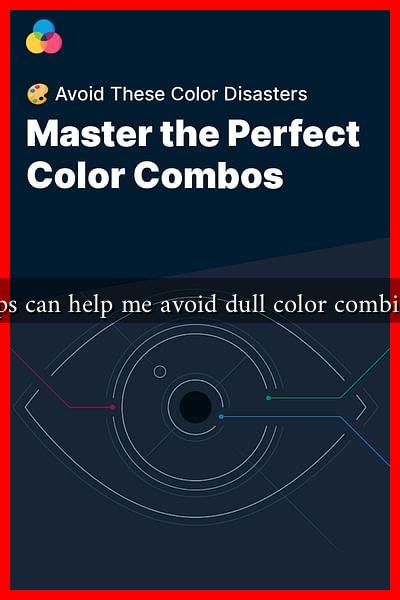-
Table of Contents
What Tips Can Help Me Avoid Dull Color Combinations?
Color plays a crucial role in design, whether it’s for fashion, interior decor, or graphic design. A well-chosen color palette can evoke emotions, create harmony, and enhance visual appeal. Conversely, dull color combinations can lead to uninspiring designs that fail to capture attention. This article will explore effective tips to help you avoid dull color combinations and create vibrant, engaging visuals.
Understanding Color Theory
Before diving into practical tips, it’s essential to grasp the basics of color theory. Color theory encompasses the principles of how colors interact, including concepts like the color wheel, complementary colors, and color harmony. Understanding these principles can significantly enhance your ability to choose vibrant color combinations.
The Color Wheel
The color wheel is a visual representation of colors arranged according to their chromatic relationship. It consists of primary, secondary, and tertiary colors. Familiarizing yourself with the color wheel can help you identify which colors work well together and which combinations may fall flat.
Tips to Avoid Dull Color Combinations
Here are some practical tips to help you steer clear of dull color combinations:
- Use a Color Palette Generator: Tools like Adobe Color or Coolors can help you create vibrant color palettes based on your preferences. These tools allow you to explore various combinations and find inspiration.
- Incorporate Contrasting Colors: Pairing contrasting colors can create visual interest. For example, combining a bright yellow with a deep purple can make both colors pop.
- Limit Your Palette: While it may be tempting to use many colors, sticking to a limited palette (3-5 colors) can create a more cohesive and striking design.
- Consider Color Psychology: Different colors evoke different emotions. For instance, blue is often associated with calmness, while red can evoke excitement. Understanding these associations can help you choose colors that resonate with your intended message.
- Experiment with Shades and Tints: Instead of using flat colors, consider using shades (darker versions) and tints (lighter versions) of a color. This adds depth and dimension to your design.
- Use Neutrals Wisely: Neutrals can balance vibrant colors, but overusing them can lead to dullness. Use them strategically to enhance rather than overshadow your main colors.
- Look for Inspiration: Explore design websites, social media platforms like Pinterest, or even nature for color inspiration. Observing how colors are used in different contexts can spark new ideas.
Case Studies: Successful Color Combinations
To illustrate the effectiveness of vibrant color combinations, let’s look at a few case studies:
- Branding: Companies like Coca-Cola and McDonald’s use bold red and yellow combinations to create a sense of urgency and happiness, respectively. These colors are not only eye-catching but also evoke specific emotions that align with their brand messages.
- Interior Design: The use of teal and coral in modern interiors has gained popularity. This combination is fresh and inviting, making spaces feel lively and comfortable.
- Fashion: Designers often use unexpected color pairings, such as orange and pink, to create striking outfits that stand out on the runway. These combinations challenge traditional norms and encourage creativity.
Statistics on Color Impact
Research shows that color can significantly influence consumer behavior. According to a study by the Institute for Color Research, people make a subconscious judgment about a product within 90 seconds of seeing it, and between 62% to 90% of that assessment is based on color alone. This statistic underscores the importance of choosing the right colors in any design.
Conclusion
Avoiding dull color combinations is essential for creating engaging and visually appealing designs. By understanding color theory, utilizing tools, and experimenting with various techniques, you can enhance your color choices and avoid uninspiring palettes. Remember to consider the emotional impact of colors, limit your palette, and draw inspiration from various sources. With these tips in mind, you’ll be well on your way to creating vibrant and captivating designs that resonate with your audience.
For more insights on color theory and design, check out Adobe’s Color Theory Guide.

